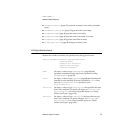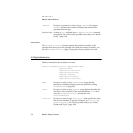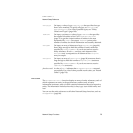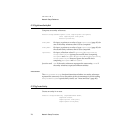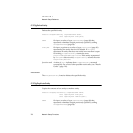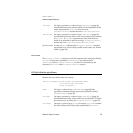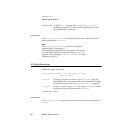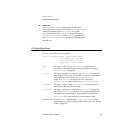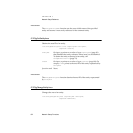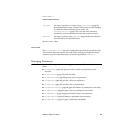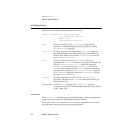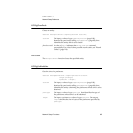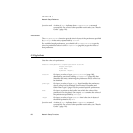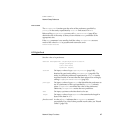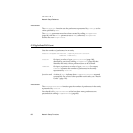
CHAPTER 3
Network Setup Reference
Network Setup Functions 81
▲
WARNING
The OTCfgGetEntityName function does not return the
user-visible name of the entity. Instead, OTCfgGetEntityName
returns an internal name in entityName. To get the
user-visible name, call OTCfgGetPrefs (page 86) passing
kOTCfgUserVisibleNamePref in the prefsType parameter or
call OTCfgGetEntityLogicalName (page 79) if that function is
available. ▲
OTCfgSetEntityName 3
Sets the user-visible name of an entity.
OSStatus OTCfgSetEntityName (CfgDatabaseRef dbRef,
const CfgEntityRef* entityRef,
ConstStr255Param entityName,
CfgEntityRef* newEntityRef);
dbRef
On input, a value of type CfgDatabaseRef (page 98) that
represents a database session previously opened by calling
OTCfgOpenDatabase (page 58).
entityRef On input, a pointer to a value of type CfgEntityRef (page 99)
that represents the entity whose name is to be set. To obtain the
entity reference for an entity, call OTCfgGetEntitiesList
(page 74). If entityRef does not refer to a valid entity,
OTCfgSetEntityName returns the error kCfgEntityNotFoundErr.
entityName On input, a value of type ConstStr255Param that specifies the
new user-visible name for the entity.
newEntityRef On input, a pointer to a value of type CfgEntityRef (page 99).
On output, newEntityRef points to a new entity reference that
represents the renamed entity. Your application should use
newEntityRef for future references to the renamed entity.
function result A value of noErr indicates that OTCfgSetEntityName returned
successfully. For a list of other possible result codes, see “Result
Codes” (page 110).



